Chromatin accessibility dynamics of neurogenic niche cells reveal defects in neural stem cell adhesion and migration during aging
- PMID: 37443352
- PMCID: PMC10353944
- DOI: 10.1038/s43587-023-00449-3
Chromatin accessibility dynamics of neurogenic niche cells reveal defects in neural stem cell adhesion and migration during aging
Abstract
The regenerative potential of brain stem cell niches deteriorates during aging. Yet the mechanisms underlying this decline are largely unknown. Here we characterize genome-wide chromatin accessibility of neurogenic niche cells in vivo during aging. Interestingly, chromatin accessibility at adhesion and migration genes decreases with age in quiescent neural stem cells (NSCs) but increases with age in activated (proliferative) NSCs. Quiescent and activated NSCs exhibit opposing adhesion behaviors during aging: quiescent NSCs become less adhesive, whereas activated NSCs become more adhesive. Old activated NSCs also show decreased migration in vitro and diminished mobilization out of the niche for neurogenesis in vivo. Using tension sensors, we find that aging increases force-producing adhesions in activated NSCs. Inhibiting the cytoskeletal-regulating kinase ROCK reduces these adhesions, restores migration in old activated NSCs in vitro, and boosts neurogenesis in vivo. These results have implications for restoring the migratory potential of NSCs and for improving neurogenesis in the aged brain.
© 2023. The Author(s).
Conflict of interest statement
The authors declare no competing interests.
Figures


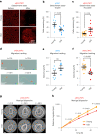


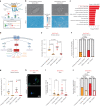


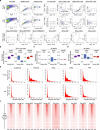

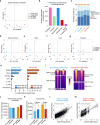

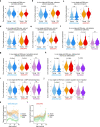

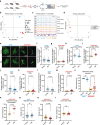

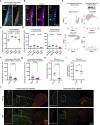
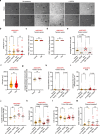
Similar articles
-
Changing and stable chromatin accessibility supports transcriptional overhaul during neural stem cell activation and is altered with age.Aging Cell. 2021 Nov;20(11):e13499. doi: 10.1111/acel.13499. Epub 2021 Oct 23. Aging Cell. 2021. PMID: 34687484 Free PMC article.
-
Distinct Molecular Signatures of Quiescent and Activated Adult Neural Stem Cells Reveal Specific Interactions with Their Microenvironment.Stem Cell Reports. 2018 Aug 14;11(2):565-577. doi: 10.1016/j.stemcr.2018.06.005. Epub 2018 Jul 5. Stem Cell Reports. 2018. PMID: 29983386 Free PMC article.
-
Methods of reactivation and reprogramming of neural stem cells for neural repair.Methods. 2018 Jan 15;133:3-20. doi: 10.1016/j.ymeth.2017.08.014. Epub 2017 Aug 31. Methods. 2018. PMID: 28864354 Review.
-
Functional rejuvenation of aged neural stem cells by Plagl2 and anti-Dyrk1a activity.Genes Dev. 2022 Jan 1;36(1-2):23-37. doi: 10.1101/gad.349000.121. Epub 2021 Dec 16. Genes Dev. 2022. PMID: 34916302 Free PMC article.
-
Assessing the Role of Ependymal and Vascular Cells as Sources of Extracellular Cues Regulating the Mouse Ventricular-Subventricular Zone Neurogenic Niche.Front Cell Dev Biol. 2022 Apr 5;10:845567. doi: 10.3389/fcell.2022.845567. eCollection 2022. Front Cell Dev Biol. 2022. PMID: 35450289 Free PMC article. Review.
Cited by
-
Autocrine VEGF drives neural stem cell proximity to the adult hippocampus vascular niche.Life Sci Alliance. 2024 Apr 17;7(7):e202402659. doi: 10.26508/lsa.202402659. Print 2024 Jul. Life Sci Alliance. 2024. PMID: 38631901 Free PMC article.
-
Epigenetic regulation of neural stem cell aging in the mouse hippocampus by Setd8 downregulation.EMBO J. 2025 Jul;44(13):3645-3668. doi: 10.1038/s44318-025-00455-8. Epub 2025 Jun 3. EMBO J. 2025. PMID: 40461639 Free PMC article.
-
The Critical Balance Between Quiescence and Reactivation of Neural Stem Cells.Biomolecules. 2025 May 6;15(5):672. doi: 10.3390/biom15050672. Biomolecules. 2025. PMID: 40427564 Free PMC article. Review.
-
Brain aging and rejuvenation at single-cell resolution.Neuron. 2025 Jan 8;113(1):82-108. doi: 10.1016/j.neuron.2024.12.007. Neuron. 2025. PMID: 39788089 Review.
-
Ageing, Cognitive Decline, and Effects of Physical Exercise: Complexities, and Considerations from Animal Models.Brain Plast. 2024 May 14;9(1-2):43-73. doi: 10.3233/BPL-230157. eCollection 2024. Brain Plast. 2024. PMID: 38993577 Free PMC article. Review.
References
-
- Gage FH, Temple S. Neural stem cells: generating and regenerating the brain. Neuron. 2013;80:588–601. - PubMed
-
- Silva-Vargas V, Crouch EE, Doetsch F. Adult neural stem cells and their niche: a dynamic duo during homeostasis, regeneration, and aging. Curr. Opin. Neurobiol. 2013;23:935–942. - PubMed
-
- Denoth-Lippuner A, Jessberger S. Formation and integration of new neurons in the adult hippocampus. Nat. Rev. Neurosci. 2021;22:223–236. - PubMed
Publication types
MeSH terms
Substances
Grants and funding
LinkOut - more resources
Full Text Sources
Research Materials

